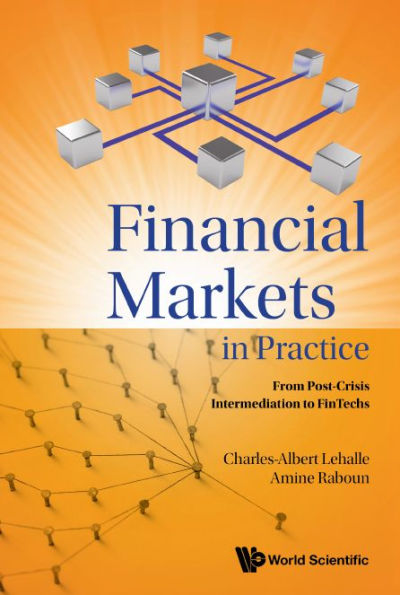Financial Markets In Practice: From Post-crisis Intermediation To Fintechs
Financial Markets in Practice: From Post-Crisis Intermediation to FinTechs delivers an overview of the development of risk-transformation undertaken by the financial services industry from the perspective of quantitative finance. It provides an instructional and comprehensive explanation of the structure of the financial system as a network of risk suppliers and risk consumers, where different categories of market participants buy, transform, net, and re-sell different kinds of risks. This risk-transformation oriented view is supported by the changes that followed the last global financial crisis: consumers of financial products asked for less complex risk transformations, regulators demanded limiting risks inside financial institutions to the maximum extent possible, and market participants turned to run mass market-like businesses and away from bespoke 'haute couture'-like businesses.This book portrays the network of intermediaries that compose the financial system, describes their most common business models, explains the exact role of each kind of market participant, and underlines the interaction between them. It seeks to reveal the potential disintermediation that could occur inside the financial sector, led by FinTechs and Artificial Intelligence-based innovations.Readers are invited to reconsider the role of market participants in the post-crisis world and are prepared for the next wave of changes driven by data science, AI, and blockchain. Amid these innovations, quantitative finance will be increasingly involved in all aspects of the financial system. This handy resource helps practitioners from both the buy-side and sell-side gain insights to, and provides an overview of, business models in the financial system from an intermediation perspective, and guides students to comprehensively understand the complex ecosystem in which they will evolve.
"1140501022"
Financial Markets In Practice: From Post-crisis Intermediation To Fintechs
Financial Markets in Practice: From Post-Crisis Intermediation to FinTechs delivers an overview of the development of risk-transformation undertaken by the financial services industry from the perspective of quantitative finance. It provides an instructional and comprehensive explanation of the structure of the financial system as a network of risk suppliers and risk consumers, where different categories of market participants buy, transform, net, and re-sell different kinds of risks. This risk-transformation oriented view is supported by the changes that followed the last global financial crisis: consumers of financial products asked for less complex risk transformations, regulators demanded limiting risks inside financial institutions to the maximum extent possible, and market participants turned to run mass market-like businesses and away from bespoke 'haute couture'-like businesses.This book portrays the network of intermediaries that compose the financial system, describes their most common business models, explains the exact role of each kind of market participant, and underlines the interaction between them. It seeks to reveal the potential disintermediation that could occur inside the financial sector, led by FinTechs and Artificial Intelligence-based innovations.Readers are invited to reconsider the role of market participants in the post-crisis world and are prepared for the next wave of changes driven by data science, AI, and blockchain. Amid these innovations, quantitative finance will be increasingly involved in all aspects of the financial system. This handy resource helps practitioners from both the buy-side and sell-side gain insights to, and provides an overview of, business models in the financial system from an intermediation perspective, and guides students to comprehensively understand the complex ecosystem in which they will evolve.
88.0
In Stock
5
1

Financial Markets In Practice: From Post-crisis Intermediation To Fintechs
364
Financial Markets In Practice: From Post-crisis Intermediation To Fintechs
364
88.0
In Stock

Product Details
| ISBN-13: | 9789811252570 |
|---|---|
| Publisher: | World Scientific Publishing Company, Incorporated |
| Publication date: | 09/16/2022 |
| Pages: | 364 |
| Product dimensions: | 6.00(w) x 9.00(h) x 0.81(d) |
From the B&N Reads Blog
